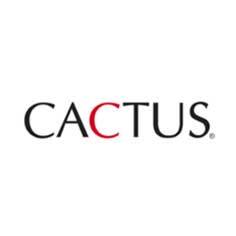In our ever-evolving digital landscape, WeChat is a valuable resource for academic societies and publishers looking to boost their content marketing strategies. During a recent fireside chat, Shane Rydquist, Director, Delivery and Solutions at CACTUS, and Lily Li, Manager, Solutions and Business Growth (China) at CACTUS, explored how WeChat is revolutionizing scholarly communication and content marketing in China. In an engaging conversation, they shared innovative ways to harness WeChat’s capabilities, highlighting how its distinctive features set it apart from platforms like LinkedIn, X (formerly Twitter), and Facebook in terms of audience engagement. The session also showcased real-life case studies, where Editage Digital Media Solutions successfully supported publishers and academic societies in achieving their communication objectives on WeChat. Here are some takeaways from their discussion.
Popular content themes to support scholarly communication
Exploring how WeChat enhances scholarly communication opens up so many exciting possibilities for publishers and academic societies. The session began by introducing some of the common content themes that publishers, societies, and journals commonly use on WeChat:
- Cutting-edge research and paper promotion: Publishers frequently showcase groundbreaking research through detailed articles, infographics, and video summaries.
- Announcements for calls for papers: WeChat is a fantastic way for journals to share calls for papers for special issues or general submissions. These announcements typically include key details, such as submission scope, introductions to editorial teams, and submission deadlines.
- Call for editors/reviewers: For journals actively looking to expand their networks of authors and reviewers in China, WeChat is a valuable medium. Such posts can be accompanied by visually appealing posters or infographics to share essential information about the journal.
- Spotlight on new journals: Another great strategy involves promoting new or lesser-known journals. Publishers frequently combine infographics and articles to share editorial insights, journal metrics, and scope, along with inviting calls to action that lead to the journal’s homepage.
- Focus on research integrity/publication ethics: Authors and research institutions in China are highly engaged in discussions about research integrity and publication ethics. Sharing insights and best practices can inspire and empower the community to navigate these important topics.
- Engagement content: WeChat is a versatile platform for dynamic content, such as events, webinars, conferences, surveys, and author interviews. Beyond promoting journals, such interactive content helps increase engagement with the audience, offering a refreshing alternative to typical promotional messages.
- Content empowering young researchers: Supporting researchers, especially those early in their careers, is crucial. For instance, navigating submission guidelines and publication standards can be challenging, but the right resources make a difference. Publishers can help by offering guidance on writing, communicating with reviewers, and promoting research.
Also read: The Digital Development of China’s Academic Publishing Industry
Key content formats and functions of WeChat
WeChat not only provides a platform for diverse content formats but also offers features that help brands expand their reach and engagement. Along with long-form articles, brands can also use infographics, posters, and videos to enhance visibility. Furthermore, combining these different formats can help your content stand out. During the session, Lily also showcased various designs and content formats created by our team, noting how each was tailored to align with client-specific branding, ensuring consistency and uniqueness across their WeChat accounts and messaging.
WeChat also offers integrated functions that make it easier for brands to engage with their audience, broaden their reach, and generate leads. Some of the key functions to consider include:
WeChat mini programs: Functioning like an app within the WeChat ecosystem, mini programs do not require downloads or external navigation. Many brands leverage them for customer engagement and lead generation. For instance, Elsevier’s Researcher Academy, a mini program, was developed to help researchers improve their research and writing skills through videos. These videos are easily accessible from other WeChat accounts, with keyword search functionality and categorization by topic or subject area.
WeChat ads: WeChat ads are a great way for brands to connect with their target audience, boost brand awareness, and grow their follower base, just like on other social platforms. For B2B businesses, there is even the option of using lead-generation forms, which makes it easy for users to share their contact information through the ad, without the need to leave the platform.
Live streaming (on the video channel): Competing with TikTok in China, WeChat’s video channel, housed within the platform, enables accounts to share both short- and long-form videos. Live streams can also be hosted on this channel and promoted on the official WeChat account, driving traffic between the video channel and the main account.
Collaborations with Key Opinion Leaders (KOLs): This strategy can be valuable for brands looking to tap into new communities, gain followers, or boost brand awareness. Rather than personal influencers, KOLs include teams, groups, or even companies—commercial entities with official accounts focused on specific subject areas, like materials science or medicine. Collaborating with KOL accounts helps brands reach targeted researcher communities or follower pools associated with these accounts. This approach is especially effective for new accounts or B2B businesses looking to enhance brand recognition, engagement, and lead generation.
Integrating these strategies through a phased approach ensures a strong foundation before expanding reach. When designing or customizing solutions for our clients, Lily explained that the process is typically divided into phases. The first phase focuses on establishing a strong foundation, setting up the official account being a key step. The next phases involve leveraging different content formats and WeChat’s various features to broaden the brand’s impact and reach. In the next part of the discussion, Lily and Shane explored case studies featuring Editage Digital Media Solutions’ collaborations with both B2B and B2C businesses to help them successfully accomplish their objectives. For a deeper dive into these cases and strategies, and insights from Shane and Lily’s experiences working with scholarly publishers and societies to harness the power of WeChat for scholarly communication, check out the full discussion.
Also read: Cracking the Code: How a Leading Phrama Publisher Entered China’s Academic Publishing Market
The conversation wrapped up by addressing questions from live session attendees. A key takeaway was the importance of maintaining a steady posting frequency—at least once per week as a basic standard, but if capacity allows, two to three posts per week can be even more effective. Consistency is key, so having a WeChat content calendar is highly recommended. Planning and customizing posts in advance can help ensure a well-structured content flow.
While WeChat strategies need not exist in isolation from a brand’s broader global communication plans, directly using the same content is not recommended, as it may not resonate well with a Chinese audience. Instead, selecting relevant content and taking a deeper dive into using a WeChat-friendly format can improve communication. Successful approaches include aligning overarching marketing objectives with platform-specific optimization, making engagement on WeChat more effective. This allows publishers to build credibility and interaction in China without requiring a complete strategy overhaul.
WeChat is an all-in-one hub for several everyday tasks for its users, including messaging, transactions, and consuming news. While platforms like TikTok hold significant sway for video content, WeChat continues to be a crucial channel for connecting with academic audiences in China. From simple posts to immersive mini-programs, WeChat offers a powerful ecosystem for engaging researchers. Its potential for personalized engagement reinforces why it continues to be a central focus for scholarly publishers and societies looking to expand their brand presence in China.
If you are looking to use WeChat to expand your brand’s reach and engagement, Editage can help develop a tailored solution that aligns with your goals. Contact us to learn more.

